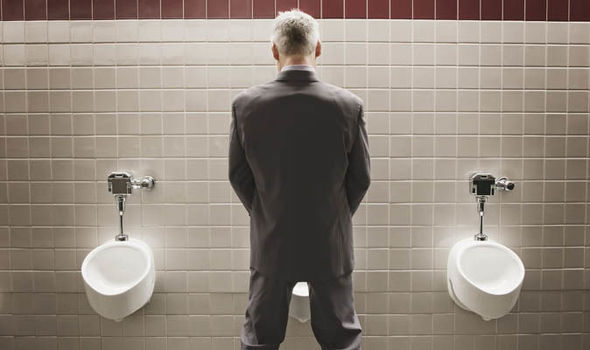Almost everyone will be familiar with the comical sight of a baby who suddenly elicits a violent shudder: It’s a pretty reliable indicator that the infant needs a diaper change. That’s because peeing is oddly associated with shivering — a strange phenomenon that persists even into adulthood. But what’s going on inside our bodies to generate this unusual response to a basic, daily function?
The truth is that we don’t really know. There’s no peer-reviewed research on the subject to shed light on the precise biological underpinnings of this phenomenon. But from what scientists do know about the bladder and its relationship with the nervous system, they’ve pieced together some possible explanations for why we shiver when we pee.
These center on two main ideas: It’s caused either by the sensation of the drop in temperature as the warm pee leaves your body or by a confusion between signals in the autonomic nervous system
The first idea is founded on the common-sense fact that we typically shiver when we feel a sudden chill. As far as peeing is concerned, the logic goes that when we expose our nether regions (an obvious necessity for peeing) to cool air, and then simultaneously void the body of warm liquid, it creates an internal temperature imbalance — a chill — that triggers an uncontrollable shiver.
But some scientists aren’t convinced by this idea, including Dr. Simon Fulford, a consultant urologist at the James Cook University Hospital in the United Kingdom. He prefers the alternative theory, which digs deeper into the nervous system for clues.
The process of urination is overseen by the ANS, the control center that orchestrates many automatic bodily functions, such as temperature and the beating of a heart, Fulford said. Obviously, urination isn’t entirely automatic because we do have voluntary control over when we pee. But before that crucial decision point, urination is largely governed by two parts of the ANS, called the parasympathetic nervous system (PNS), and the sympathetic nervous system (SNS).
When the bladder reaches fullness, tiny stretch receptors in its muscular wall detect the motion of the bladder stretching and activate a set of nerves in the spinal cord called the sacral nerves. In turn, these spring the PNS into action, which causes the muscular bladder wall to contract, preparing it to push urine out of the body. This autonomic process works like an on-off switch, suppressing the instructive nerve reflexes while the bladder is still filling up, but “stimulating those reflexes to act when the bladder is full,” Fulford told Live Science.




Comments are closed.